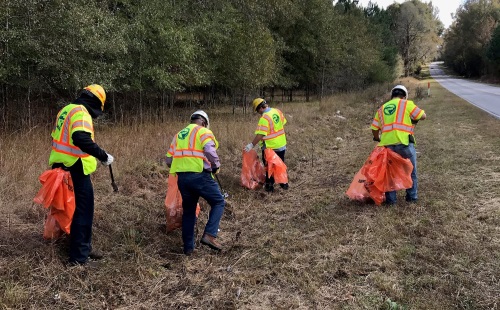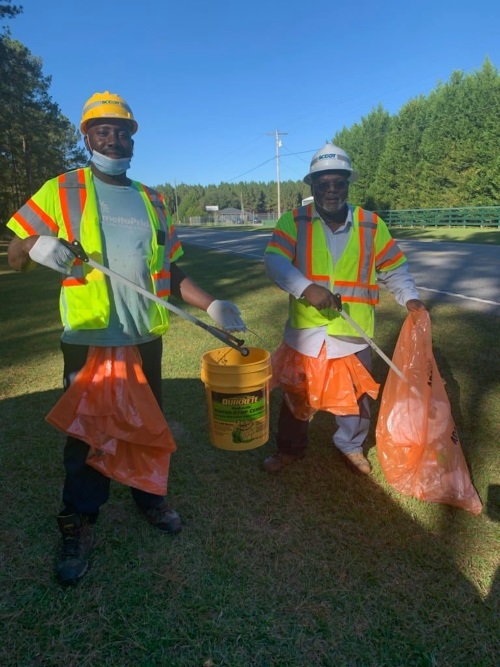A roundup of headlines curated for state transportation environmental professionals
FEDERAL ACTION
Biden to enlist Agriculture, Transportation agencies in climate fight – The Hill
Telework may be the recruitment and retention solution agencies – and Congress – are looking for – Federal News Network
Neal eyes massive coronavirus relief, climate and infrastructure package – Roll Call
Feds Deny Permit for Mine Planned Near Pristine Alaska Bay – Courthouse News Service
COVID-19
Pandemic has surprising impacts on public transit demand – Ohio State News
Female chiefs of Arkansas, Mississippi highway agencies discuss COVID, tell their stories – Talk Business & Politics
Complete Streets in a Pandemic and Beyond with Jennifer Toole, Toole Design – ITE Talks Transportation (podcast)
INFRASTRUCTURE RESILIENCE AND SUSTAINABILITY
How Trump’s $1 Trillion Infrastructure Pledge Added Up – CityLab
Airport continues aircraft noise update – High Point Enterprise
Regional initiative targets transportation, climate change in underserved rural communities – Boston University News Service
5 maritime sustainability trends for 2021 – Freightwaves
Along the crumbling Sonoma coast, an ambitious project paves the way for ‘managed retreat’ – Los Angeles Times
AIR QUALITY
GM hits reverse on Trump effort to bar California emissions rules – Reuters
Illegal Tampering by Diesel Pickup Owners Is Worsening Pollution, E.P.A. Says – New York Times
It’s time to dump diesel trucks in N.J. – NJ.com (Opinion)
ENVIRONMENTAL JUSTICE
Bearing the Brunt of Expanding E-Commerce: Logistics Sprawl, Goods Movement, and Environmental Justice – Transfers
Racial Injustice in Environment Policy Becomes White House Focus – Bloomberg Law
NATURAL RESOURCES
Artificial floating islands will help safety of water for Ohioans – The Lantern
EPA fights suit forcing it to act on Pennsylvania, New York cleanup plans – Bay Journal
Wildlife uses Utah’s first interstate crossing just for them – KCRG-TV
Turkeys in Your Neighborhood? Get Used to It. – CityLab
Weed Science Societies Announce Plans for Virtual Annual Meetings – Weed Science Society of America (Press release)
HEALTH AND HUMAN ENVIRONMENT/ACTIVE TRANSPORTATION
Oakley adopts ban on shared-mobility devices – The Press (California)
Ford unveils plans for mobility innovation district around Michigan Central Station – SmartCitiesWorld
TxDOT puts down signs to help pedestrians, bicyclists find walkways in construction zones – KXXV-TV
Some Residents Push For Denver’s ‘Shared Streets’ Program To Become Permanent – KCNC-TV
TRB RESOURCES/ANNOUNCEMENTS
Building resilient transportation networks – TRB
Webinar: Cross-Cutting Issues in Urban Congestion Pricing – TRB
A Pandemic Playbook for Transportation Agencies – NCHRP/TCRP
Availability and Use of Pedestrian Infrastructure Data to Support Active Transportation Planning – NCHRP
Last Mile in General Aviation – Courtesy Vehicles and Other Forms of Ground Transportation – ACRP
RFP: Toward a Touchless Airport Journey – ACRP
Toward Universal Access: A Case Study in the Los Angeles and Puget Sound Regions – Eno Center for Transportation (link to PDF)
U.S. Department of Transportation Announces First Ever Comprehensive ‘Pedestrian Safety Action Plan’ – USDOT (Press release)
FEDERAL REGISTER NOTICES
Design Standards for Highways – FHWA (Notice of proposed rulemaking, request for comments)
State Highway Agency Equal Employment Opportunity Programs – FHWA (Notice of proposed rulemaking)
Vessel Incidental Discharge National Standards of Performance; Public Meetings – EPA (Notice)
Agency Programs Subject to Intergovernmental Review Under Executive Order 12372, Section 204 of the Demonstration Cities and Metropolitan Development Act, and Section 401(a) of the Intergovernmental Cooperation Act of 1968 – EPA (Notice and request for comments)
Proposed Settlement Agreements, Clean Water Act and Endangered Species Act – EPA (Notice; request for public comment)
National Environmental Policy Act (NEPA) Compliance – Forest Service (Final rule)
Deepwater Port License Application: Bluewater Texas Terminal LLC; Correction – Maritime Administration (Notice; correction)
Agency Information Collection Activities: Requests for Comments; Clearance of Renewed Approval of Information Collection: Commercial Air Tour Limitations in the Grand Canyon National Park Special Flight Rules Area – FAA (Notice and request for comment)
Hazardous Materials: Adoption of Miscellaneous Petitions To Reduce Regulatory Burdens – Pipeline and Hazardous Materials Safety Administration (Final Rule)
Regulated Navigation Areas; Harbor Entrances Along the Coast of Northern California – Coast Guard (Notice of proposed rulemaking)






